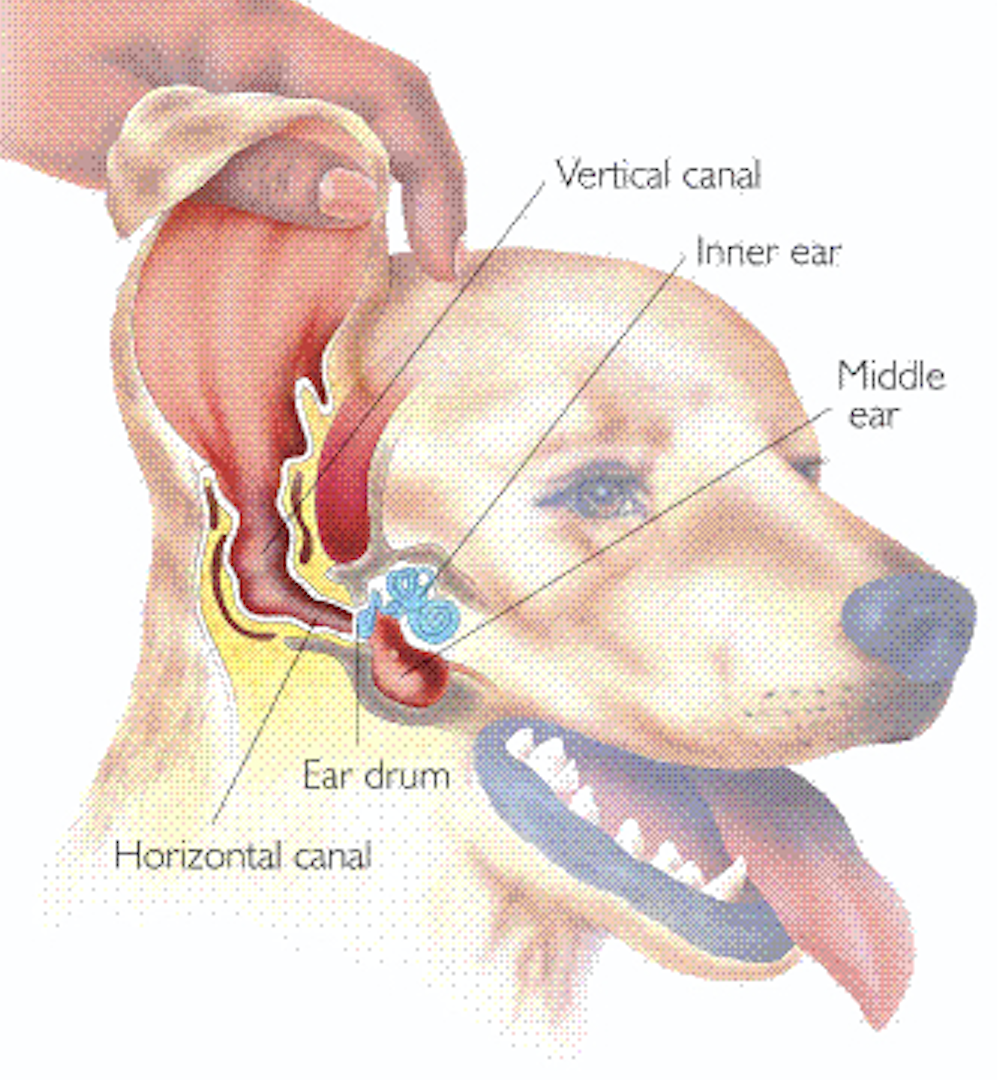“I think my dog just had a stroke.”
This is something you never want to hear yourself say. If your senior pet suddenly begins to walk in circles, has an unsteady gait and seems dizzy, or holds its head tilted to one side, Idiopathic Vestibular Disease may be the cause. This is a common condition that affects older dogs and it comes on very suddenly; it is also a syndrome that looks really bad, but usually gets better all on its own with time and little or no treatment. Unfortunately, however, I have heard of situations where these sorts of symptoms were assumed to be a brain tumor and the pet was euthanized—maybe unnecessarily.

Because of this, I want to shed light on a more common and less concerning cause of these sudden signs, why they happen, and what we can do about it.
The vestibular system
Just like in people, a dog’s vestibular system is responsible for maintaining a sense of balance. When something goes wrong with this system, it’s like being drunk on a rocky boat and dogs with idiopathic vestibular disease have some combination of the following signs:
- A head tilt,
- An unsteady gait, loss of balance, or falling over,
- Circling in one direction,
- Eyes rapidly moving from side to side, known as nystagmus,
- Sudden vomiting.
These videos show a dog with mild, but typical, vestibular signs and another with more severe signs.
Note: If any of these signs are noted, your pet should be seen by your veterinarian who can perform a neurologic and ear examination to further evaluate.
An important thing to know is that these symptoms are not unique, or diagnostic for, idiopathic vestibular disease and other diseases can cause the same presentation including a brain tumor, an inner ear infection, inflammatory disease or sudden bleeds into the brain. With that being said, when the symptoms suddenly appear out of nowhere in an older dog, I have hope that the cause may be less serious with a good chance of improvement with a little time and TLC.
What next?
For a dog showing the above signs, blood work and a blood pressure check are recommended to make sure there is no “obvious” disease. An MRI can be done to evaluate the inner ear and brain, which allows for the best evaluation of disease, but it is often not pursued due to cost.
Both ear canals should be evaluated, and if an infection is suspected antibiotic therapy should be pursued, especially since inner ear disease is one of the possible causes of vestibular signs. The inner ear (pictured below) is something you cannot directly see during an exam because the eardrum covers the view to the inner ear – it is like a closed door that sits in front of the middle and inner ear. However, if there is a nasty looking outer ear and an inflamed eardrum, there is a chance that inner ear disease could be present.

If a dog’s clinical signs are so severe that they cannot walk, supportive care with IV fluids and injectable anti-nausea medications is generally recommended. Urinary catheters are sometimes placed for hygienic reasons. If clinical signs are mild, pets can often be managed at home with nursing care and over-the-counter meclizine which helps the feelings of “motion sickness” they experience.
Idiopathic Vestibular Disease has a very loose rule of thumb: If there is gradual or complete improvement within 72 hours, the cause of signs is likely due to this disease and additional diagnostic testing may not be necessary. If there is no improvement or if there is progression of symptoms, the cause could be something more serious, such as a brain tumor, and an MRI would be recommended to reach a diagnosis. With idiopathic vestibular disease, slow but steady improvement is usually seen in this time frame, with the pet slowly but steadily returning to normal, or almost normal, in 7 to 14 days (although in some dogs, a head tilt will still persist for the rest of their lives).
It should also be noted that Idiopathic Vestibular Disease is not a painful condition, and my recommendations stem from the fact that euthanasia is a permanent decision, so why not wait and see, giving time a chance? There is the potential that improvement will be seen, and the difficult decision of euthanasia can always be made at a later date if this is not the case or if there is a change in your pet’s quality of life.
I do feel there is reason to hold out hope and be cautiously optimistic, as idiopathic vestibular disease is one of the most common causes of these sudden signs in our older dogs.

 Toledo, United States.
Toledo, United States.